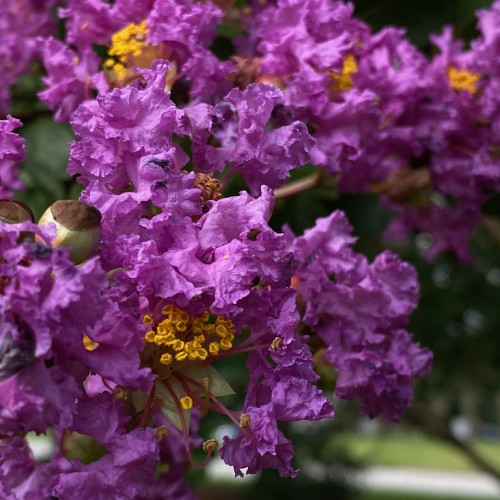
crape myrtle
Lagerstroemia indica 'Muskogee'
Cycle:
Perennial
Watering:
Average
Hardiness Zone:
6 - 9
Flowers:
Flowers
Sun:
Full sun
Leaf:
Yes
Growth Rate:
High
Maintenance:
Moderate
Salt Tolerant:
Yes
Care Level:
Medium
watering
Crape myrtle (Lagerstroemia indica 'Muskogee') needs moderate to regular watering to keep it healthy and vibrant. It should be watered well when first planted, and then watered about once every 5 to 7 days during the first growing season. This will help the roots become established in the soil. In the summer, crape myrtle should receive more water to help the plant tolerate extreme heat or drought stress. During the hottest months, the soil should remain moist, but not soggy. In the winter months, it is important to reduce watering to prevent the roots from rotting. Water the crape myrtle once every 2 to 3 weeks and check the soil before each watering to make sure that it is not too wet.
sunlight
Crape Myrtle (Lagerstroemia indica 'Muskogee') typically requires 8-10 hours of full sunlight each day, usually in the mornings, to help ensure healthy growth and optimal color. For best results, it is recommended to provide the plant with at least 6 hours of direct sunlight in the peak hours of the day, which can range from 10 a.m. to 6 or 7 p.m., depending on the region. Plants that receive an adequate amount of direct sunlight will experience the most vibrant blooms and the deepest foliage colors. In areas with significant heat and sunlight in the summer, afternoon sunlight may need to be partially filtered or blocked to prevent scorching.
pruning
Crape myrtle (Lagerstroemia indica 'Muskogee') should be pruned twice a year. Prune in late winter or early spring by removing dead, diseased and damaged branches. Then in late summer or early fall trim off the tops of the stems to encourage the tree to form denser foliage. Avoid over-pruning, as it will depress the overall health of the tree and reduce its vigor. Do not cut off the slender shoots that will give the tree its characteristic shape.
